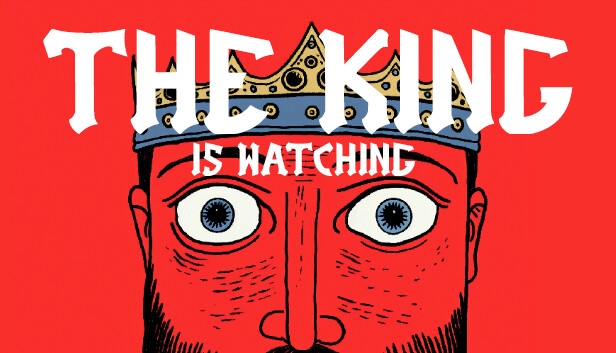Advertisement
Popular Now
The King is Watching, developed by Hypnohead and published by tinyBuild, is a roguelite kingdom-building game that introduces a unique twist: your subjects only work when you're watching them. Released on July 21, 2025, this pixel-art strategy game combines tower defense, resource management, and auto-battler elements, challenging players to balance economy, defense, and expansion under the pressure of enemy waves and a limited gaze mechanic. This guide provides comprehensive tips and strategies to help you thrive as a monarch, from early-game survival to late-game dominance. Whether you're a beginner or a seasoned player, these insights will help you maximize your kingdom's potential and fend off dragons, necromancers, and goblin warlords.
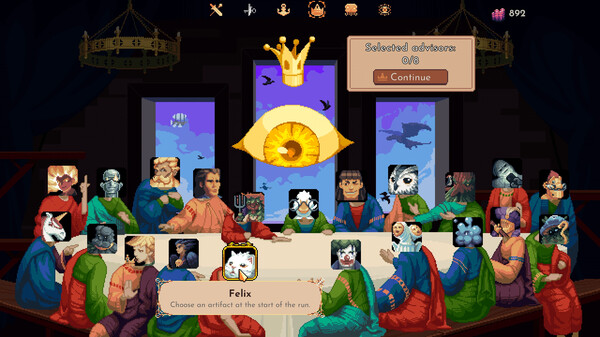
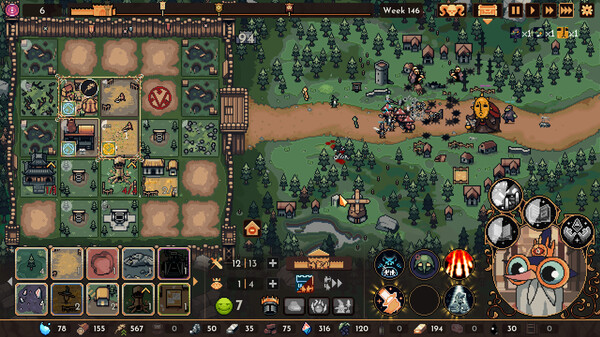
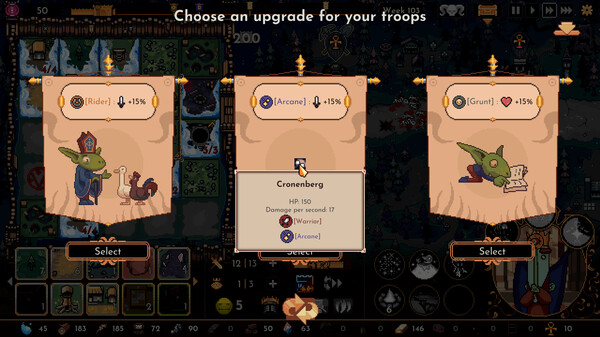
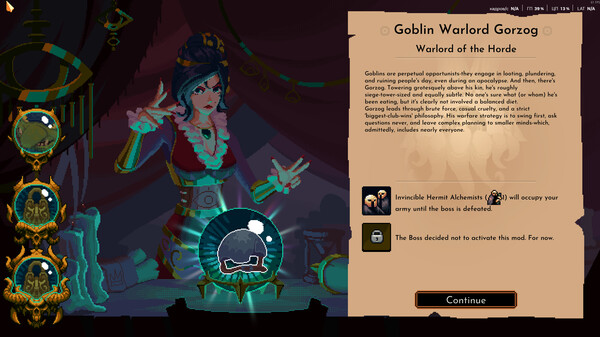
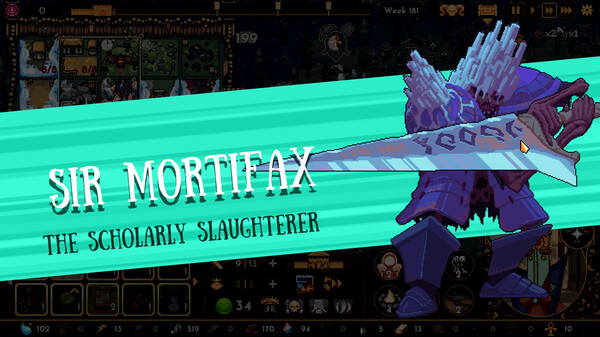
Understanding the Core Mechanic: The King's Gaze

What is the King's Gaze?
The defining feature of The King is Watching is the King's Gaze, a mechanic that dictates productivity. Buildings only produce resources or units when within your gaze, which starts as a three-tile grid. If a building is outside this grid, it remains idle, halting production. This forces players to prioritize which resources or units to focus on at any given time, creating a strategic puzzle that evolves with each run.Managing Your Gaze Effectively
To master the gaze mechanic, plan your building placements carefully. Early in the game, position essential resource buildings like wells, fields, and forests within your gaze to ensure a steady supply of water, wheat, and wood. As you progress, consider upgrading your gaze size to cover more tiles, allowing simultaneous production from multiple buildings. Use the right mouse button to rotate your gaze, optimizing coverage without moving buildings unnecessarily, as relocation incurs a brief production penalty.- Tip: Always keep your gaze on high-priority buildings, such as barracks during enemy waves or markets when selling resources for gold.
Prioritizing Resource Management
Essential Resources for Early Survival
Water, wheat, wood, stone, coal, and silver are the lifeblood of your kingdom. Early in the game, focus on securing water (via wells) and wheat (via fields) to sustain your population and economy. Water is critical for producing secondary resources like food, while wheat fuels markets for gold generation. Don't neglect wood and stone, as they are necessary for constructing advanced buildings like barracks and forges.Optimizing Resource Production
To avoid shortages, maintain a stockpile of basic resources. For example, keep extra water and wheat to quickly build or repair structures during emergencies. Replace infinite wells with other buildings if space becomes tight, as you can always rebuild them later with minimal cost. Consider using Big Wells for faster water collection when time is critical, as they gather at twice the speed of regular wells. Efficient resource management sets the foundation for a robust economy, enabling you to afford unit production and upgrades. Resource Checklist:- Maintain at least 50 units of water and wheat for emergencies.
- Use Big Wells for rapid water collection during resource crunches.
- Sell excess grain at markets to fund early upgrades.
Building an Efficient Kingdom Layout

Strategic Building Placement
Your kingdom's layout significantly impacts efficiency due to the gaze mechanic. Place synergistic buildings close together to maximize gaze coverage. For instance, grouping fields, forests, and markets allows you to produce and sell resources simultaneously. Avoid spreading critical buildings too far apart, as this forces you to split your gaze inefficiently. Be prepared to move buildings to adapt to new blueprints or urgent needs, despite the short production penalty.Adapting to Limited Space
Space is a finite resource in The King is Watching, especially as your kingdom grows. Prioritize buildings that don't require constant gazing, like passive gold mines, for areas outside your main focus. If resource tiles are nearly depleted, replace them with more critical structures to free up space. Regularly assess your layout to ensure it aligns with your current priorities, such as defense during enemy waves or economy during peaceful periods. Layout Tips:- Group resource buildings for efficient gaze coverage.
- Replace nearly empty resource tiles with barracks or forges.
- Use the shift + left-click mechanic to swap buildings quickly.
Mastering Unit Production and Defense

Choosing the Right Units
Units are your kingdom's defense against waves of enemies, ranging from goblins to dragons. Early-game units like Archers and Hunters are highly effective due to their high damage output and ability to generate gold from kills. Archers, in particular, are a must-have for their versatility and cost-effectiveness. As you progress, consider adding Ballistas for area damage and Beast Hunters for crowd control, especially against bosses.Upgrading Unit Limits
Your unit limit determines how many troops you can deploy, and upgrading it is crucial for surviving tougher waves. The unit limit upgrade button is located above the gaze size upgrade button, just above your Morale indicator. Check its requirements regularly and invest resources to increase it, allowing you to field more Archers, Ballistas, or even late-game units like Fire Wizards and Dragons. Keeping your unit production at maximum capacity ensures a reserve force to replace losses quickly. Unit Strategy:- Prioritize Archers and Hunters for early-game defense.
- Upgrade unit limits to support more powerful units like Ballistas.
- Keep barracks active to maintain maximum troop capacity.
Leveraging the Pause Mechanic
Why Pausing is Essential
The King is Watching allows you to pause the game or adjust its speed, a feature that transforms it from a frantic RTS into a strategic, turn-based experience. Pausing gives you time to assess your kingdom's status, plan building placements, and decide which resources or units to prioritize. Use this mechanic liberally, especially when reorganizing your layout or preparing for an incoming wave.Planning During Pauses
When paused, evaluate your resource stocks, enemy wave indicators, and building productivity. Plan your next three gaze movements to optimize production without wasting time. For example, if an enemy wave is approaching, pause to swap in hospitals or barracks to bolster your defenses. This deliberate approach prevents costly mistakes and ensures you’re always prepared for the next challenge. Pause Checklist:- Check enemy wave indicators for upcoming threats.
- Assess resource stocks and building placements.
- Plan gaze movements to cover critical buildings.
Upgrading Your Gaze Size Early
The Importance of Vision Upgrades
Upgrading your gaze size is a top priority, as it allows you to activate more buildings simultaneously, boosting overall productivity. A 33% productivity increase from an early vision upgrade can be a game-changer, enabling you to manage multiple resource types or train units without sacrificing economy. Rush this upgrade by stockpiling resources like water and wheat to meet its requirements quickly.How to Fund Gaze Upgrades
To fund gaze upgrades, focus on selling grain at markets early in the game. Build three wells, a forest, and a field, then position your gaze to cover two fields and a market. Sell excess grain for gold, which you can use to purchase the vision upgrade. This strategy, often called the "Wheat Baron" approach, provides a strong economic foundation for further expansion. Upgrade Tips:- Stockpile 50 water and wheat to rush vision upgrades.
- Sell grain at markets to generate gold quickly.
- Position gaze to cover fields and markets simultaneously.
Utilizing Spells and Artifacts

Top Spells for Combat
Spells like Necromancy, Meteorite, Tornado, Freeze, and Wrath can turn the tide of battle. Don’t hoard them—cast them frequently to disrupt enemy waves or protect your units. For example, the Stun Artifact, which triggers every 20 attacks, is particularly effective against bosses when paired with Beast Hunters’ abilities. Prioritize spell generation by building spell colleges and keeping them in your gaze during downtime.Artifacts for Resource Efficiency
Artifacts like Crystal and Metal Masks generate resources from enemy kills, reducing reliance on mines or forges. These can be game-changers in runs where space or resources are tight. Purchase artifacts from the shop whenever possible, as they often provide more immediate value than new buildings. Experiment with different artifact combinations to find synergies that match your playstyle. Spell and Artifact Strategy:- Use Stun Artifact with Beast Hunters for boss control.
- Cast spells like Tornado or Freeze to disrupt enemy waves.
- Prioritize artifacts over buildings in the shop for quick boosts.
Preparing for Enemy Waves
Anticipating Threats
Enemy waves escalate in difficulty, culminating in boss fights against dragons, necromancers, or goblin warlords. Check the enemy wave indicator to anticipate threats and adjust your strategy. Early waves can often be tanked by your castle walls, allowing you to focus on economy. However, before major waves, swap in hospitals, arenas, or spell colleges to boost healing, unit strength, or spell availability.Defensive Strategies
During tough waves, prioritize defensive units like Soldiers and Ballistas, supported by hospitals for healing. If your army is wiped out, having reserve troops in barracks can prevent a total collapse. Rotate your gaze to keep barracks and hospitals active during battles, and consider letting early waves hit your walls to conserve resources for economy-building. Wave Preparation:- Check enemy indicators to plan unit production.
- Swap in hospitals before major waves for healing.
- Let early waves hit walls to focus on economy.
Scaling for Late-Game Success
Building a Gold Engine
To scale past week 260, establish a reliable gold engine. Early on, sell ingots (made from iron in forges) for three gold each. Once your economy stabilizes, replace markets with gold mines for passive income. This transition reduces reliance on active gaze management, freeing up your focus for unit production and upgrades. A strong gold engine supports late-game units like Fire Wizards and Dragons.Investing in Meta-Progression
The King is Watching features meta-progression through the council building on the start screen. Use it to boost gaze size, unit stats, spell slots, and income for future runs. Each defeat grants permanent upgrades, making subsequent runs easier. Focus on unlocking new abilities and stronger defenses to tackle tougher bosses and higher difficulty levels like Ascensions. Late-Game Tips:- Transition from markets to gold mines for passive income.
- Use council upgrades to enhance gaze size and unit stats.
- Invest in Fire Wizards and Dragons for late-game waves.
Adapting to Random Events and Bosses

Handling Unique Events
Each run in The King is Watching features random events and bosses, ensuring no two playthroughs are identical. Events like cursed cemeteries or infernal depths require adaptive strategies. For example, a dragon boss may demand stun-heavy tactics, while a necromancer requires area-of-effect spells. Stay flexible by diversifying your unit roster and keeping a variety of spells ready.Boss-Specific Strategies
Bosses like dragons or goblin warlords have unique mechanics that demand tailored responses. For dragons, use Beast Hunters and the Stun Artifact to interrupt their attacks, preventing map-wide damage. Against necromancers, prioritize area damage units like Ballistas or spells like Meteorite to clear summoned minions. Experiment with different unit and spell combinations to find what works best for each boss. Boss Tips:- Use Beast Hunters and Stun Artifact for dragon fights.
- Deploy Ballistas and Meteorite spells against necromancers.
- Adapt building layouts to counter event-specific challenges.












